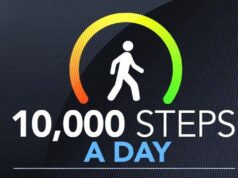Walking vs. Running for Fat Loss: Which is Better?
When it comes to fat loss, two of the most accessible options are walking and running. Both are simple, effective, and cost nothing to start.
But which one burns more fat? Can you really lose 5kg in a month just by walking? And what happens if you run every day for a month? Let’s break it down.
Walking vs. Running: Calorie Burn
The most basic difference between walking and running is calorie expenditure. Running burns more calories per minute because it requires more effort. A 70 kg person burns about:
- Running (8 km/h or ~5 mph): ~600 calories/hour
- Walking (5 km/h or ~3 mph): ~280 calories/hour
So, minute for minute, running gives you double the calorie burn. But that doesn’t mean walking is ineffective. If you walk longer or farther, you can still match or exceed the total calories burned by a short run.
Is Walking Good for Fat Loss?
Yes, walking is absolutely effective for fat loss — especially if you’re consistent. It’s low-impact, easy to recover from, and unlikely to cause injury when done right.
For people who are overweight, new to exercise, or managing joint issues, walking is often the smarter choice.
Walking also helps manage cortisol (a stress hormone that can contribute to fat gain), supports better insulin sensitivity, and can be done frequently without much risk of overtraining.

Can I Lose 5kg in a Month by Walking?
Losing 5kg (11 pounds) in a month is a tough — but not impossible — goal. To lose that much, you’d need a calorie deficit of about 38,500 calories over 30 days, which means a daily deficit of around 1,280 calories.
Walking burns ~280 calories/hour, so you’d need to walk about 4.5–5 hours a day, assuming no dietary changes. That’s not realistic for most people.
But if you combine:
- Walking 1.5–2 hours a day (about 10,000–15,000 steps)
- Reducing your daily calorie intake by 500–700 calories
- Getting adequate protein to preserve muscle
Then yes, losing 5kg in a month becomes possible. It will take commitment, but many people have done it.
Is It Better to Run 1 Mile or Walk 3?
If your only goal is to burn calories, then:
- Running 1 mile burns ~100–120 calories (depending on speed and weight)
- Walking 3 miles burns ~240–300 calories
So walking 3 miles burns more overall.
However, running 1 mile takes about 10 minutes, while walking 3 miles takes about 45–60 minutes. So it comes down to your time and goals:
- Short on time? Run.
- More time, less impact, lower intensity? Walk more.
Also, consider your recovery capacity. Walking daily is manageable for most people. Daily running can be taxing on joints and muscles, especially without rest or proper form.
What Happens If You Run Every Day for a Month?
Running daily for 30 days can bring major fitness benefits — or injuries — depending on your level and how you approach it. Here’s what you might experience:
The Good:
- Increased cardiovascular fitness: Your heart and lungs adapt fast.
- Higher calorie burn: Even 20–30 minutes a day can add up to 9,000+ calories/month.
- Better mental health: Daily movement helps with mood, anxiety, and focus.
- Improved discipline and habit formation
The Bad (if done wrong):
- Injury risk: Shin splints, knee pain, and stress fractures are common with no rest days.
- Overtraining: Fatigue, poor sleep, and low motivation can kick in if you don’t fuel or recover properly.
- Muscle loss: If your diet is low in protein or calories, and you’re not strength training, your body may break down muscle.
Tips to Run Daily Safely:
- Mix in easy runs and shorter durations
- Rotate shoes and run on soft surfaces
- Keep one day per week as a “jog or walk” day
- Prioritize warm-ups and recovery
Fat Loss Isn’t Just About the Activity
Whether you walk or run, the foundation of fat loss remains the same: calories in vs. calories out. You can lose fat with either activity if you’re in a calorie deficit.
But here’s what really accelerates your results:
- Strength training: Builds and maintains muscle, increasing your metabolic rate.
- High protein intake: Helps preserve lean mass and keeps you fuller.
- Sleep and stress management: Poor sleep or high stress can blunt fat loss.
Walking and running are tools. Your lifestyle — diet, training, habits — determines how well those tools work.
Which Should You Choose?
Walk if:
- You’re a beginner or overweight
- You have joint issues or are recovering
- You prefer low-impact, steady-state movement
- You want something sustainable and meditative
Run if:
- You want to burn more calories in less time
- You’re already fit or active
- You enjoy high-intensity workouts
- You can recover well between sessions
You don’t have to choose just one. A smart fat loss plan can include both — run a few times a week, walk on other days, and lift weights 2–3 times a week. The key is consistency.
Conclusion
Walking and running both work for fat loss, but the right choice depends on your fitness level, time, and injury risk.
You can absolutely lose 5kg in a month if your diet and activity line up — walking can be your main fat-burning tool if you stay consistent and mindful of what you eat.
Whether you walk 10,000 steps a day or run every morning, the results come from doing it over time — not in one burst. Pick the movement that fits your life, and stick with it.




